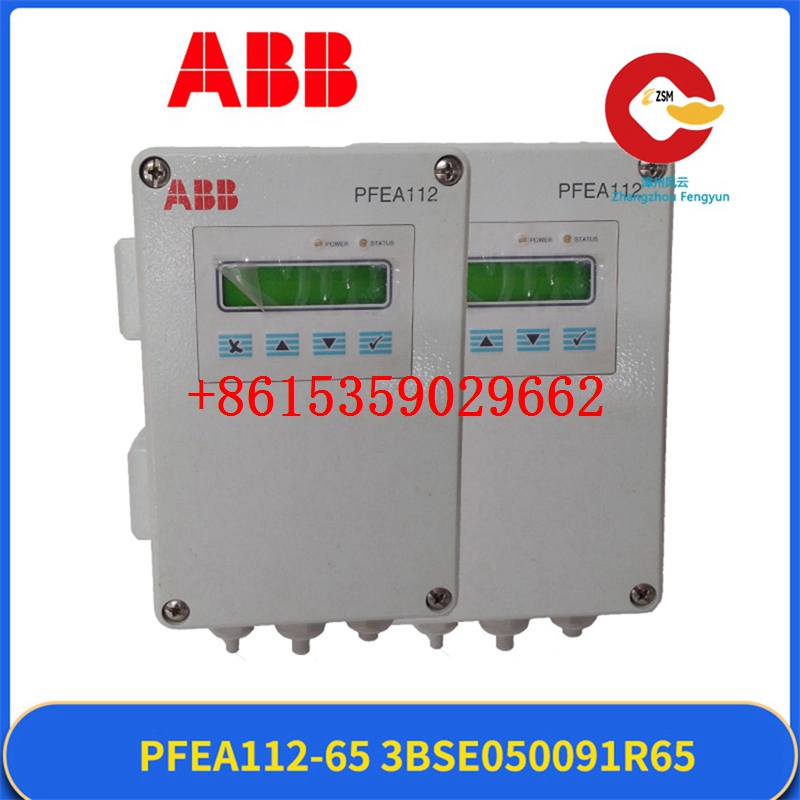Technical Parameters of ABB PFEA111 – 65 Tension Controller Module 3BSE050090R65

1. General Overview
The ABB PFEA111 – 65 tension controller module, with the part number 3BSE050090R65, is a key component in ABB’s tension control systems. It is designed to accurately regulate and maintain the tension of materials in various industrial processes, such as paper making, film production, and textile manufacturing.
2. Control Performance
- Tension Control Accuracy: It offers a high – level of tension control accuracy, typically within a range of ±1% – ±3% of the set – point tension under normal operating conditions. This precise control ensures consistent product quality and reduces material waste. For example, in a paper – making line, maintaining the correct tension prevents wrinkles, tears, and uneven thickness in the paper.
- Response Time: The module has a fast response time, usually in the range of milliseconds. This allows it to quickly adjust the tension in response to changes in the production process, such as variations in material speed or thickness. A quick response time is crucial for preventing tension fluctuations that could lead to production defects.
3. Input and Output Signals
- Input Signals:
- Analog Inputs: It can accept analog input signals from various tension sensors, such as load cells or dancer roll sensors. The input voltage range for analog signals is typically 0 – 10V or 4 – 20mA. These analog inputs provide real – time feedback on the actual tension of the material.
- Digital Inputs: The module also has digital inputs for receiving signals from other devices in the production line, such as start/stop commands, emergency stop signals, and machine status indicators.
- Output Signals:
- Analog Outputs: It generates analog output signals to control the tension – regulating devices, such as brakes, clutches, or drives. The output voltage range is usually 0 – 10V, and it can be used to adjust the torque or speed of the tension – regulating equipment.
- Digital Outputs: Digital outputs are available for controlling relays, indicating alarms, or providing status information to other parts of the control system.
4. Communication Capabilities
- Fieldbus Communication: The PFEA111 – 65 supports various fieldbus protocols, such as Profibus, DeviceNet, or Ethernet/IP. This allows it to be easily integrated into existing industrial automation networks, enabling seamless communication with other ABB and third – party devices. For example, it can exchange data with a programmable logic controller (PLC) to coordinate the tension control with other production processes.
- Data Logging and Monitoring: Through the communication interface, the module can log and transmit tension data, alarm information, and system status to a central monitoring system. This facilitates remote monitoring and troubleshooting, reducing downtime and maintenance costs.
5. Power Supply Requirements
- Input Voltage: The module operates on a standard industrial power supply voltage, typically 24V DC or 110 – 230V AC. It has built – in power protection circuits to prevent damage from voltage spikes, surges, and short – circuits.
- Power Consumption: The power consumption of the PFEA111 – 65 is relatively low, usually in the range of a few watts to tens of watts, depending on the specific configuration and operating conditions.
6. Environmental Specifications
- Operating Temperature Range: It is designed to operate within a temperature range of – 20°C to + 60°C (or similar ranges depending on the model and application). This ensures reliable performance in various industrial environments, from cold storage facilities to hot manufacturing plants.
- Humidity and Moisture Resistance: The module has a certain level of resistance to humidity and moisture. It is usually housed in a protective enclosure that meets specific IP (Ingress Protection) ratings, such as IP54 or higher, to prevent moisture ingress and corrosion.
- Vibration and Shock Resistance: Industrial environments often involve vibration and shock from machinery operation. The PFEA111 – 65 is designed to withstand these mechanical stresses without damage, ensuring long – term reliability.
7. Configuration and Programming
- User Interface: The module may have a local user interface, such as a display and keypad, for basic configuration and monitoring. This allows operators to set the tension set – point, view real – time tension values, and acknowledge alarms without the need for a computer.
- Software Configuration: Advanced configuration and programming can be done using ABB’s dedicated software tools. These tools provide a graphical user interface for setting up complex tension control algorithms, calibrating sensors, and configuring communication parameters.
8. Compliance and Certifications
The ABB PFEA111 – 65 tension controller module complies with relevant industry standards and regulations. It may hold certifications such as CE (Conformité Européenne), UL (Underwriters Laboratories), or other regional and international safety and quality standards. These certifications demonstrate that the module meets strict requirements for electrical safety, electromagnetic compatibility (EMC), and environmental performance.
In conclusion, the ABB PFEA111 – 65 tension controller module 3BSE050090R65 is a high – performance, reliable component that offers precise tension control, flexible communication options, and robust environmental specifications. Its ability to integrate with industrial automation networks and its user – friendly configuration tools make it a valuable solution for a wide range of tension control applications.


